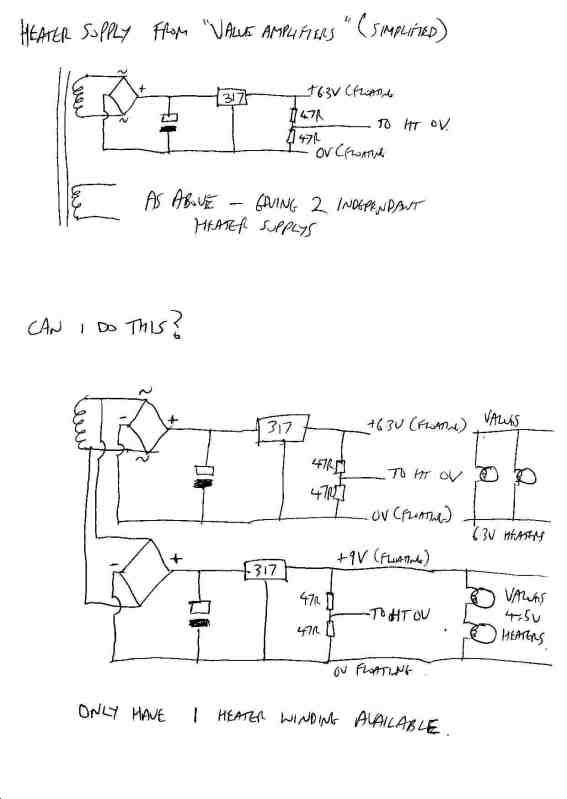mikeyB
Well-known member
Couple of things - first off - got a copy of "Valve amplifiers" by Morgan Jones - looks to be some good stuff in there if you want to learn about design.
Are there any other good books like this aimed at the beginner/novice to get into the design aspect?
Section on psu that shows a twin regulated heater psu - outputs are floating but each section has it's own secondary winding. Further reading suggests that you treat the heater wiring as you would for ac - ie twisted pair with the output centred to 0V with 2 47R close tolerance resistors (humdinger is the old term is it?)
ie. you end up with +/- 3.15V on a 6.3V supply.
Is it possible to connect 2 bridge rectifiers to the one ac winding - then one set of +/- feeds say a 9V regulator that can be referenced +/- 4.5V and the other set of +/- bridge outputs feeding a 6.3V reg that can be referenced +/- 3.15V; reason being I want to use valves with 9V and 6.3V heaters? - purpose being to only use 1 secondary instead of 2 secondaries for the heaters.
Thanks in Advance
Are there any other good books like this aimed at the beginner/novice to get into the design aspect?
Section on psu that shows a twin regulated heater psu - outputs are floating but each section has it's own secondary winding. Further reading suggests that you treat the heater wiring as you would for ac - ie twisted pair with the output centred to 0V with 2 47R close tolerance resistors (humdinger is the old term is it?)
ie. you end up with +/- 3.15V on a 6.3V supply.
Is it possible to connect 2 bridge rectifiers to the one ac winding - then one set of +/- feeds say a 9V regulator that can be referenced +/- 4.5V and the other set of +/- bridge outputs feeding a 6.3V reg that can be referenced +/- 3.15V; reason being I want to use valves with 9V and 6.3V heaters? - purpose being to only use 1 secondary instead of 2 secondaries for the heaters.
Thanks in Advance



